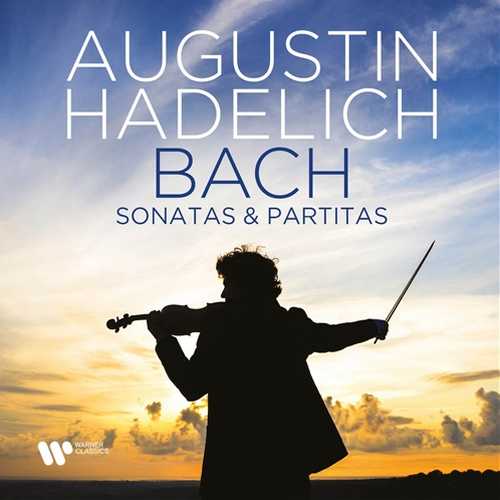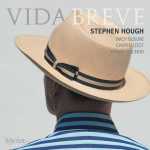
Composer: Johann Sebastian Bach
Performer: Augustin Hadelich
Format: FLAC (tracks)
Label: Warner
Release: 2021
Size: 5.12 GB
Recovery: +3%
Scan: yes
Violin Sonata No. 1 in G Minor, BWV 1001
01. I. Adagio
02. II. Fuga
03. III. Siciliana
04. IV. Presto
Violin Partita No. 1 in B Minor, BWV 1002
05. I. Allemanda
06. II. Double
07. III. Courante
08. IV. Double
09. V. Sarabande
10. VI. Double
11. VII. Tempo di Bourree
12. VIII. Double
Violin Sonata No. 2 in A Minor, BWV 1003
13. I. Grave
14. II. Fuga
15. III. Andante
16. IV. Allegro
Violin Partita No. 2 in D Minor, BWV 1004
17. I. Allemande
18. II. Courante
19. III. Sarabande
20. IV. Gigue
21. V. Chaconne
Violin Sonata No. 3 in C Major, BWV 1005
22. I. Adagio
23. II. Fuga
24. III. Largo
25. IV. Allegro assai
Violin Partita No. 3 in E Major, BWV 1006
26. I. Preludio
27. II. Loure
28. III. Gavotte en Rondeau
29. IV. Menuett I
30. V. Menuett II
31. VI. Bourree
32. VII. Gigue
Lovingly long, smooth and slowly drawn, the quietly subdued broken G minor chord with which Augustin Hadelich opens his Bach Solo Violin Sonatas and Partitas is of a showstopping beauty and distinctiveness that’s rarely heard so immediately and unmistakably in recordings of this Everest of the violin repertoire. It would be an understatement to say that it sets expectations high, and equally it’s an understatement to proclaim that, as Hadelich proceeds through the set, he follows though on all that initial promise.
A project instigated by the March 2020 lockdown when concert life came to a standstill, this studio recording was made with Hadelich playing on his usual modern set-up – on his newly acquired 1744 Guarneri del Gesù once played by Henryk Szeryng – but unusually for him on a Baroque bow, with its greater capacity for lightness and buoyancy. A further melding of past and present is his decision to use sparing vibrato, when a Baroque performance purist wouldn’t. Likewise, while a Baroque violinist may add any number of additional embellishments of their own, Hadelich has largely kept to the ones Bach himself wrote in. So if you’re looking for a nutshell description for what Hadelich’s presenting here, in terms of tools and playing style it’s a sort of hybrid between Baroque and modern performance. Likewise his tempi: back to the G major sonata’s opening Adagio, and while on the one hand its light, “piano” grace places it Baroque performance territory, it’s at least a minute slower than the period readings of Isabelle Faust, Rachel Podger or Giuliano Carmignola, and instead in the same ball park as “modern” readings from the likes of James Ehnes, Izhak Perlman or Hilary Hahn; although it doesn’t always fall that way, because at other points it’s the period performance tempi he’s closest to, such as with the opening Adagio of Sonata No. 3 in C major, and the D minor Partita’s famous Chaconne.
The Chaconne reading, by the way, is a very fine one, its pleasures including the strong rhythmic momentum as it moves towards its conclusion 9’30” (and indeed all three of the partitas are satisfyingly rhythmically redolent of their dance roots), and colouristic treats such as a sudden flash of turbulent choppiness to the articulation at 11’05”. Another highlight is Partita No. 3, where the brighter, louder ring afforded by metal strings reaps especial dividends – listen to the Gavotte en Rondeau to hear what I mean.
That’s a lot of talk about technical and colouristic devices and performance decisions. However, to circle back to that very first G minor chord, the quality that ultimately makes this set such a magical end-to-end listen is its multiple emotional worlds. From bleak despair, to gentle wit or merry exuberance, Hadelich’s readings have palpably presented us with the human soul; which, whether you’re into period performance, or reclaiming Baroque repertoire for modern instruments, is ultimately what this special music is all about.



